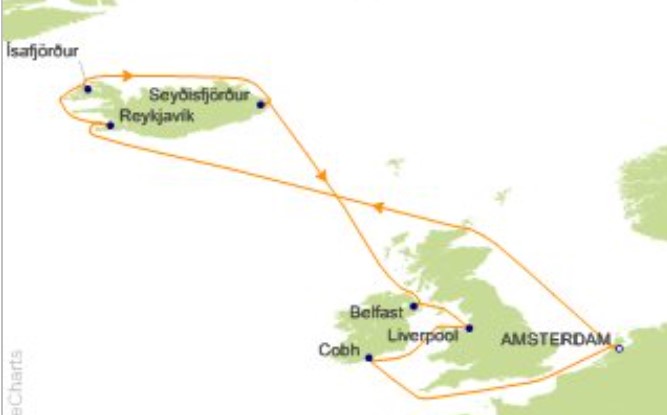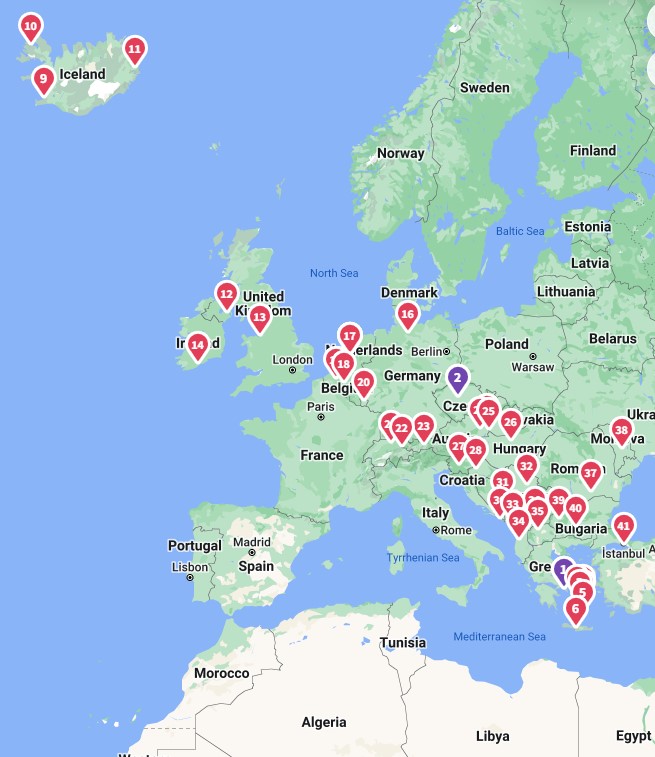Ok, so due to the turmoil going on in South America (our original plan), we have had to move the goalposts and hit Europe instead. Needless to say, that this comes with a massive increase in costs, which will greatly impact how long we can stay away and the need for us to go back to work when we finally get back home. We have both been to Europe previously going together in around 2009 as a form of belated honeymoon.
The 2009 trip took in a fair chunk of France, Italy and Spain with a drop-in to Germany to catch up with my cousins.
My earlier trip was one of those Contiki-style numbers back in 1996, which took in Austria, Belgium, Luxembourg, Monaco, Netherlands, Switzerland, and the UK, as well as hitting Italy and France. I also somehow managed to jag a work trip, back in the day, to the Czech Republic (now Czechia).

This left a decent enough map of where we had already seen but still left huge portions and lots of countries unvisited.
So What is Europe?
According to the United Nations, there are either 44 or 45 countries in Europe today (with the difference being the inclusion of Kosovo). Several European countries joined together to create the European Union to trade goods but this has expanded beyond its economic purpose to the freedom of movement of people, goods, and services. This includes 27 member states, with several others in negotiations to join the union.
Not included in the list of 44 or 45 are several countries:
- Turkey, which occupies only a small part of East Thrace on the European Balkan Peninsula.
- Cyprus, an island in the Mediterranean Sea, is geographically part of Asia Minor (Middle East).
- The Faroe Islands, an island group between the Norwegian Sea and the North Atlantic Ocean are a self-governing territory of the Kingdom of Denmark.
- Greenland, which geographically belongs to North America, is as well an autonomous Danish territory.
- A small piece of Western Kazakhstan is also considered to be part of Europe.
Let’s start thinking about where to go
In doing so you first find yourself asking What is Schengen? – this is the EU passport-free zone that covers most European countries. It’s the largest free travel area in the world. Why is this important? – The Schengen visa is the most commonly used and allows a person to travel to any of the Schengen member countries (27 of them) for up to 90 days in any 180-day period for tourism or business purposes.
This is great for short stays but does create some challenges for a long-term trip as once you have hit your 90 days you are locked out for the next 3 months. Unfortunately, this does not reset if you leave. If you bounce in and out then you need to keep track of the timeline from your first entry to make sure you don’t overstay this visa. In addition, you need to keep constant track of how many days you have done in this block of 180.
Where not to go?
At the time we were doing our planning, Russia and Ukraine were ruled 100% out as the security situation was described by smart traveller as volatile. Heavy fighting is occurring in parts of eastern and southern Ukraine. Missile strikes and attacks are ongoing in some locations across the country, including in major cities. There have been many casualties. Foreigners have been killed and may be targeted. Do not travel to Ukraine, there is a risk to life.
So what is planned?

Our first (2023) foray into Europe saw us arriving in Greece in early May 2023. This is something that had been on Jill’s bucket list for a very long time. The stops included Athens and then an exercise in island hopping stopping in at Syros, Mykonos, Paros, Naxos, Thera and Crete for a few days/nights each.
After Greece, we headed to Czechia (formerly the Czech Republic) where we had some time to explore Prague.
From here Netherlands for a few days before we start our Icelandic Cruise which took in the cities of Reykjavík, Ísafjörður and Seydisfjordur While also stopping in the UK (Belfast and Liverpool) and Ireland (Cork) before returning to Amsterdam.

A quick pop over to Germany (Hamburg) for a week to catch up with my cousins and then back to the Netherlands to fly out to Canada and Alaska for another cruise before returning to the Netherlands. From here we will launch into our European exploration properly.

This involved a blitz through central and eastern Europe that took place at a pace that was tough to keep up with when you were reading along, let alone when you did it for real.